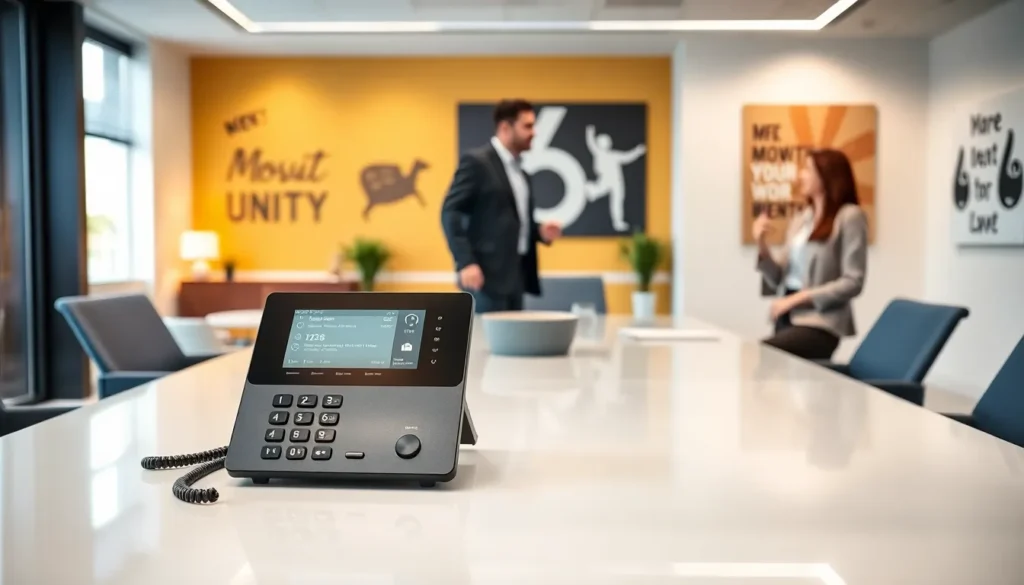If you think VoIP phones are just fancy gadgets for tech enthusiasts, think again. Cisco VoIP phones are transforming the way businesses communicate, one clear call at a time. Imagine having a phone that not only makes calls but also integrates seamlessly with your favorite business applications. Sounds like magic, right? Let’s jump into the world of Cisco VoIP phones and discover why they’re becoming a must-have for any modern office. Strap in: this will be more entertaining than your last Zoom meeting.
Table of Contents
ToggleWhat Are Cisco VoIP Phones?

Cisco VoIP phones are devices designed for Voice over Internet Protocol (VoIP) communication. Unlike traditional phones that rely solely on analog signals, these beauties use the internet to transmit voice data. What does this mean for the average user? A more flexible, scalable, and often cost-effective phone solution. Cisco, a leader in networking solutions, has embraced VoIP technology, allowing companies to enhance their telecommunication capabilities.
VoIP phones not only handle voice calls but also offer features like video calling and messaging, giving users the freedom to communicate in various ways. Integrated with Cisco’s robust Unified Communications system, they can help streamline business operations and improve productivity. In essence, Cisco VoIP phones are not just a tool: they are a gateway to better communication.
Key Features of Cisco VoIP Phones
Cisco VoIP phones come packed with features that make communication smoother and more efficient. Let’s take a peek at some standout characteristics:
- High Voice Quality: One of the primary selling points of Cisco VoIP phones is their crystal-clear voice quality. With advanced codecs, users get to experience optimal audio even during high-traffic internet times.
- User-Friendly Interface: Most Cisco phones come equipped with intuitive interfaces that are easy to navigate. This means less time fumbling around and more time making those important calls.
- Integration Capabilities: These devices easily integrate with other Cisco applications like Webex and Jabber. This level of connectivity allows teams to collaborate seamlessly.
- Security Features: Cisco has prioritized security in its VoIP phones. With advanced encryption methods, users can ensure their conversations remain private and secure from malicious threats.
- Customization Options: Users can customize settings and features to fit their specific needs, enhancing the user experience even further.
Benefits of Using Cisco VoIP Phones
When it comes to enhancing communication within businesses, Cisco VoIP phones are hard to beat. Here are some notable benefits:
- Cost Savings: VoIP technology can significantly reduce costs compared to traditional telephony. Businesses can enjoy lower monthly bills, especially for long-distance calls.
- Scalability: As a company grows, its communication needs evolve. Cisco VoIP phones can be easily scaled, allowing businesses to add lines without major overhauls.
- Portability: Flexibility is the name of the game. With Cisco VoIP phones, employees can make or receive calls from anywhere with internet access, freeing them from being tied to their desks.
- Enhanced Collaboration: The integration with web conferencing tools facilitates better team collaboration. Whether it’s a quick call or a scheduled video meeting, Cisco makes it easy.
- Rich Features: Features like voicemail-to-email, call forwarding, and virtual receptionists add an extra layer of convenience, making daily operations smoother.
Types of Cisco VoIP Phones
Cisco offers a variety of VoIP phones tailored to meet diverse business needs. Let’s explore some popular options:
- Cisco 8800 Series: This series is ideal for businesses that require high-quality audio and video calls. It’s loaded with features like HD video, programmable keys, and Bluetooth connectivity.
- Cisco IP Phone 7800 Series: Designed for everyday business use, this series combines low cost with essential features that guarantee reliable communication.
- Cisco DX Series: Aimed at mobile professionals, these devices provide a sleek design with a touchscreen interface, making video calls effortless.
- Cisco 6900 Series: This entry-level series is perfect for companies seeking basic functionality. It’s user-friendly and cost-effective, making it great for startups and small businesses.
Setting Up Cisco VoIP Phones
Setting up Cisco VoIP phones takes a bit of know-how but is generally straightforward. Here’s a quick guide to get started:
- Network Connection: Start by connecting the phone to the local network via an Ethernet cable. Make sure your internet connection is robust to avoid voice issues.
- Power Up: Use either Power over Ethernet (PoE) or a standard power adapter to power the phone.
- Configuration: After powering up, the phone will go through a boot process. You may need to input specific settings based on your organization’s infrastructure.
- Test Calls: Once set up, conduct test calls to ensure everything is working as expected. Troubleshoot any issues that arise during this phase.
Troubleshooting Common Issues with Cisco VoIP Phones
Even the best technology can run into hiccups. Here are some common issues and how to tackle them:
- Poor Call Quality: This could be due to network issues. Ensure that the bandwidth is sufficient for VoIP calls or troubleshoot the network connection.
- Phone Not Registering: If the phone isn’t connecting to the server, double-check the configuration settings and network connection.
- No Sound During Calls: If you’re experiencing one-way audio, verify that your firewall settings are allowing VoIP traffic. Sometimes, restarting the phone can help too.
- Firmware Updates: Keeping the phone’s firmware updated ensures it runs smoothly, so check for updates regularly.



